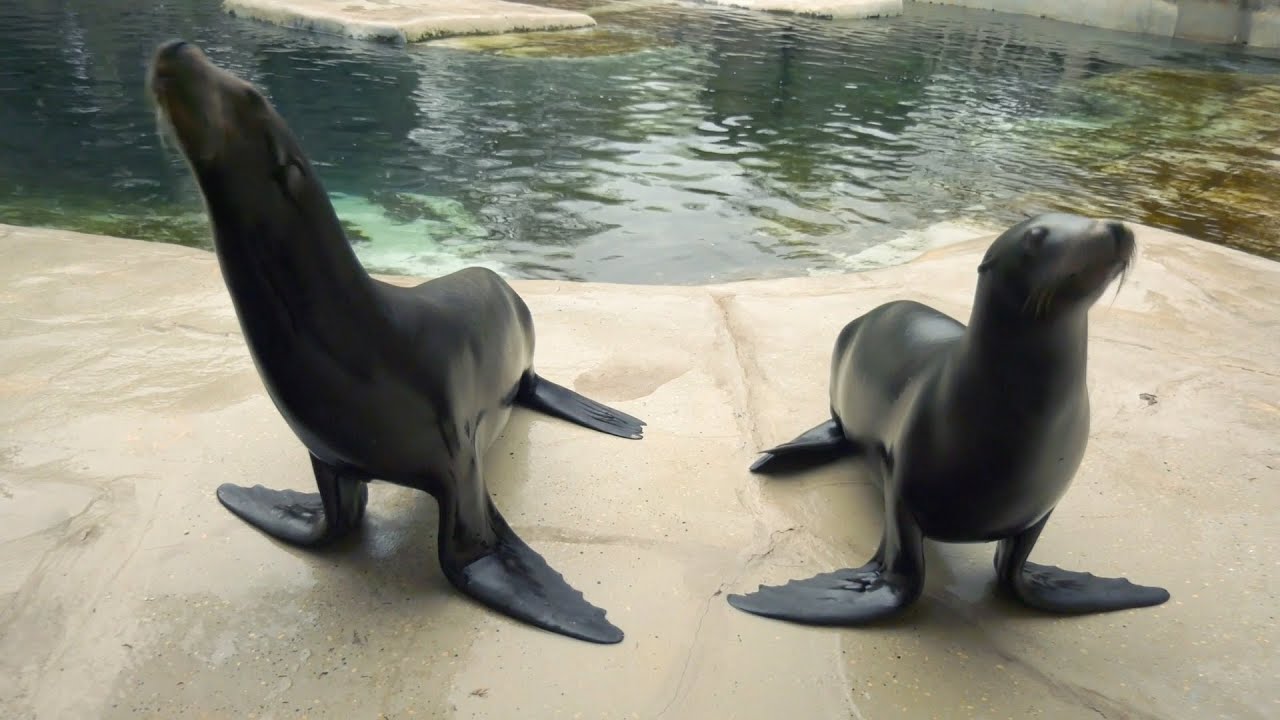- Overview of the Sea Lion species and their habitats
- Specific behaviors and characteristics of Sea Lions
- Role of zoos in the conservation and education about Sea Lions
- Detailed description and educational objectives of the [video_desc] "Greetings from our Sea Lions!"
- Conservation strategies and initiatives for Sea Lions
Sea lions, with their playful demeanor and charismatic personalities, are a subject of fascination and study. They belong to the pinniped family, which also includes seals and walruses. Pinnipeds are marine mammals with fin-like flippers that make them exceptional swimmers. Sea lions inhabit diverse regions, from the cold waters of the North Pacific to the warmer coasts of southern California, the Galápagos Islands, and parts of Asia and Australia.
Sea lion species, such as the California Sea Lion (Zalophus californianus), the Steller Sea Lion (Eumetopias jubatus), and the Australian Sea Lion (Neophoca cinerea), have distinct habitats and behaviors. California Sea Lions, for instance, are known for their intelligence and curiosity, while Steller Sea Lions are the largest species, living mostly in subarctic waters.
Their habitats are crucial for their survival, often comprising coastal regions with rocky shores, sandy beaches, and even man-made structures like piers. These environments provide the necessary resources for their feeding, mating, and pupping activities. Sea lions are opportunistic feeders, consuming a varied diet of fish, squid, and other marine organisms. Their ability to adapt to different prey and habitats highlights the importance of protecting diverse marine ecosystems.
Sea lions exhibit fascinating behaviors, both in the wild and in captivity. They are highly social animals, forming large herds on land during the breeding season. Male sea lions, or bulls, are known for their vocalizations, which serve various communication purposes, from warding off rivals to attracting females. Researchers study these vocal patterns to understand more about their social structures and mating systems.
In captivity, such as at reputable zoos and aquariums, sea lions are ambassadors for their species. These institutions play a significant role in raising public awareness about marine conservation issues. Zoos provide an up-close view of sea lions, allowing visitors to appreciate their agility and intellect. Through educational programs and interactive exhibits, zoos inform the public about the critical need to protect marine habitats and reduce human impacts like pollution and overfishing.
A specific example of these educational efforts is seen in "Greetings from our Sea Lions!" [video_desc]. This video offers a fascinating glimpse into the daily life of sea lions in captivity. It showcases their training routines, health check-ups, and playful interactions, emphasizing the bond between these animals and their caretakers.
The video serves multiple educational objectives. Firstly, it aims to educate the public about the natural behaviors of sea lions, such as their swimming techniques and social interactions. Additionally, it highlights the importance of environmental enrichment in captivity. Enrichment activities, which may include puzzles, toys, and structured training sessions, are vital for maintaining the psychological and physical health of captive sea lions.
By showcasing these elements, the video underscores the role of modern zoos in wildlife conservation. Zoos today are not just places for public display but are centers for research, education, and rehabilitation. They participate in breeding programs for endangered species and work closely with wildlife conservation entities to develop strategies for protecting sea lions in the wild.
Regarding conservation strategies, there are several initiatives geared toward safeguarding sea lion populations. One primary strategy is habitat protection, which involves establishing marine protected areas (MPAs) where human activities are regulated to minimize disruptions to natural habitats. These MPAs help ensure that sea lions have safe breeding and feeding grounds, free from excessive human interference.
Another crucial aspect is addressing public threats, such as entanglement in fishing gear and marine pollution. Organizations and researchers work together to develop and implement measures that reduce bycatch – the accidental capture of non-target species in fishing gear. Improved fishing practices and public awareness campaigns are also vital in mitigating these threats.
Monitoring and research are also pivotal. By tracking sea lion populations and studying their feeding habits, migration patterns, and health status, scientists can gather critical data to inform conservation policies. Technologies like satellite tagging offer detailed insights into their movements and behaviors, helping identify critical habitats and migration corridors that need protection.
International cooperation is essential for the effective conservation of sea lions, considering their wide-ranging habitats. Agreements and treaties among countries set guidelines for the sustainable management of marine resources and protect migratory species. For example, the Marine Mammal Protection Act (MMPA) in the United States ensures the protection of sea lions and other marine mammals within U.S. waters, setting a precedent for similar regulations worldwide.
Public engagement remains a cornerstone of conservation efforts. Educational initiatives, whether through videos like "Greetings from our Sea Lions!" or interactive exhibits at zoos, play a crucial role in fostering a conservation-minded public. By understanding the lives and challenges of sea lions, people are more likely to support conservation efforts and adopt practices that benefit marine ecosystems.
In summary, sea lions are remarkable marine mammals with complex behaviors and vital roles in their ecosystems. Modern zoos and aquariums are indispensable in promoting the conservation and understanding of these animals through public engagement, education, and scientific research. Videos like "Greetings from our Sea Lions!" vividly capture the essence of these efforts, providing a compelling narrative that underscores the need for continued conservation measures to protect sea lions and their habitats. Through concerted global efforts, there is hope that future generations will continue to witness the playful greetings of sea lions in the wild.
*****
Source Description
Hello from Luci and Ady! 👋 Luci and Ady are currently vacationing at Brookfield Zoo Chicago while their habitat at Denver Zoo Conservation Alliance is being renovated. Our friends at Brookfield Zoo recently sent a video postcard sharing updates on these girls and their adventures in Chicago. 💙
Check it out and support our sea lions’ habitat renovations! Donate today: https://my.denverzoo.org/donate/q/sea-lion?premove=Y&promo=39910


